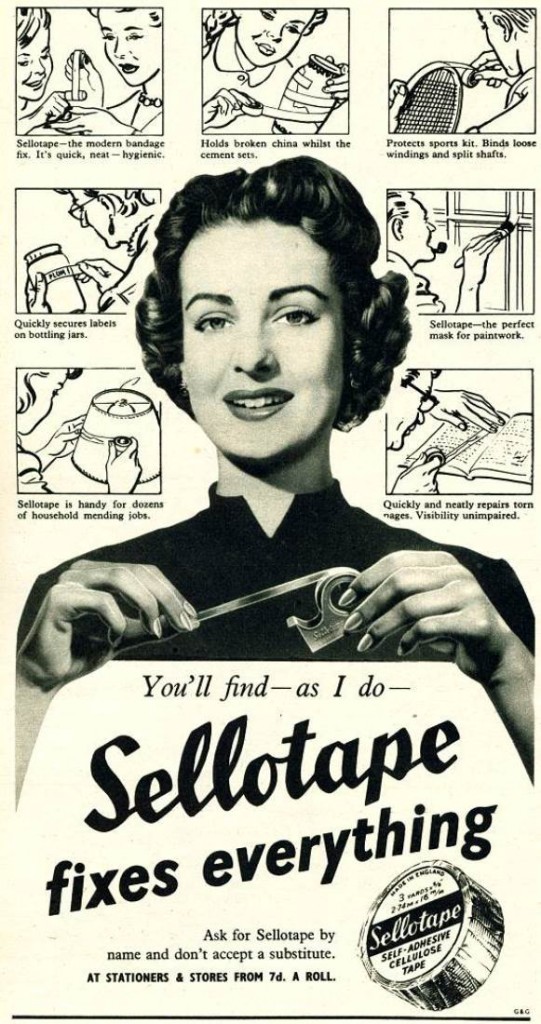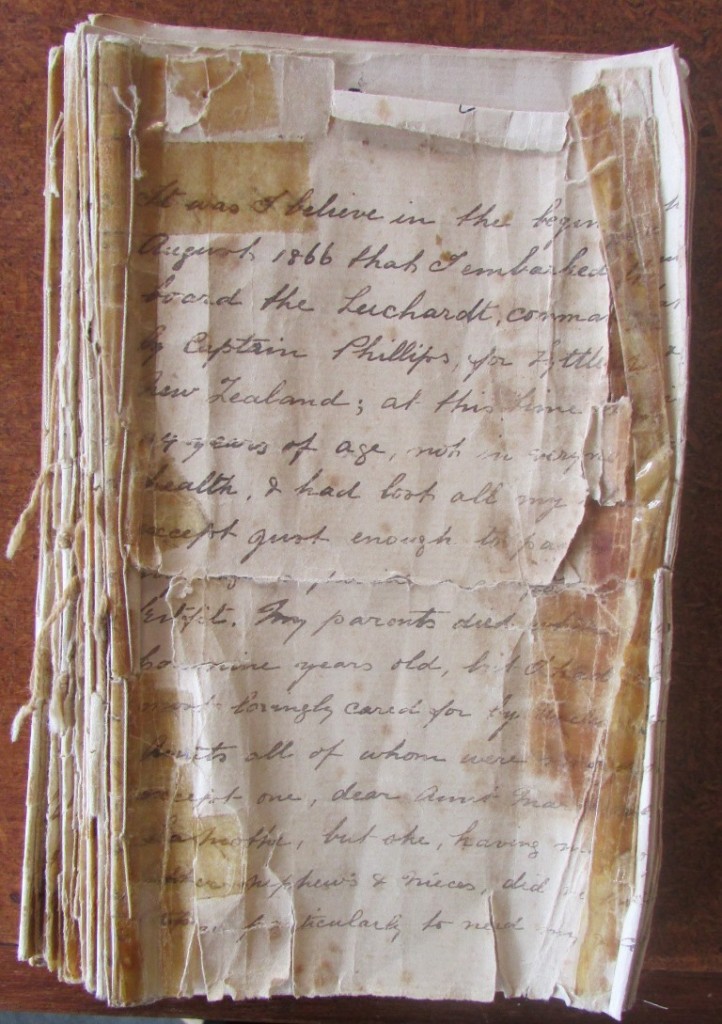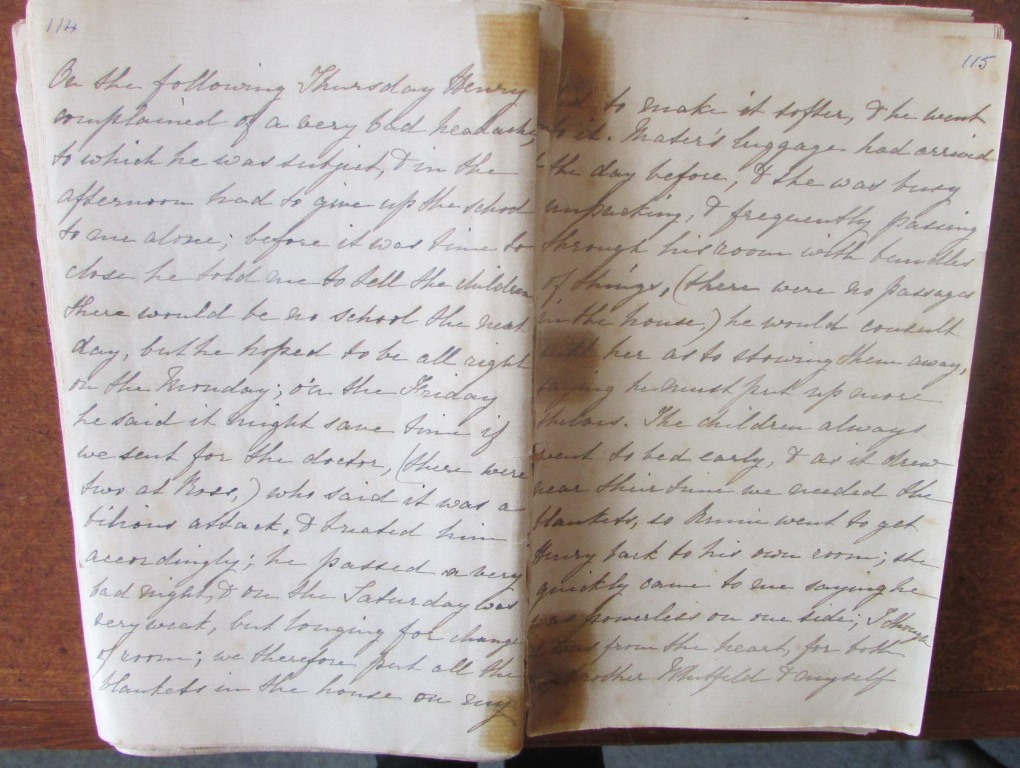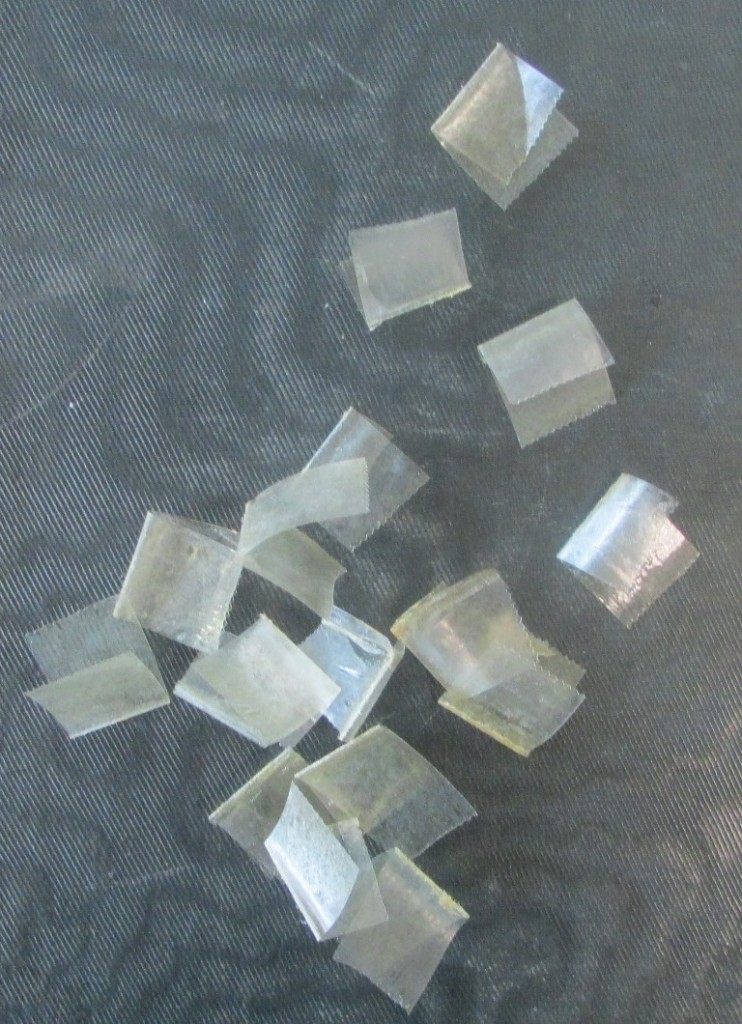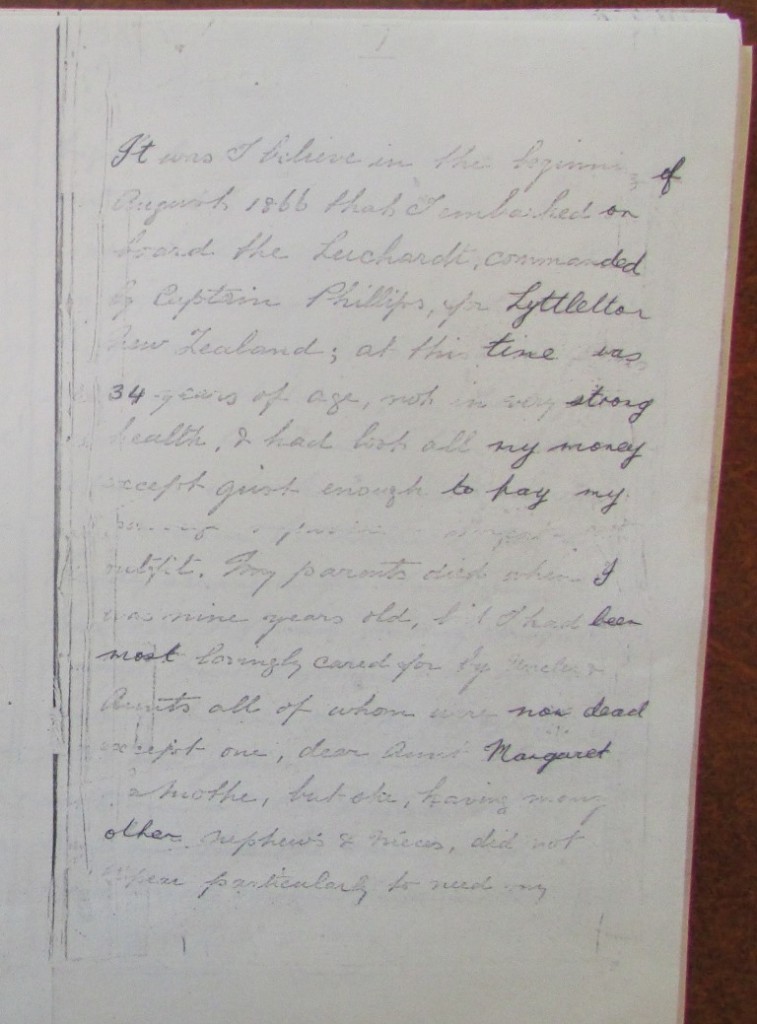Post researched and written by Debbie Gale, Arrangement and Description Archivist.
Since its introduction in the 1930s, sellotape has been popular for attaching and mending paper and other material. It is a common sight in archives to see first-hand just how much harm this ‘quick fix’ can do in the long term.
This family heirloom below, the memoirs of Catherine Hester Ralfe dated 1896 (our reference 87-072), is testament to just how damaging the irreversible effects of sellotape can be:
As is apparent, rips and tears on the first page have been repaired with sticky tape and its lasting effects are neither successful nor aesthetic. It is a perfect example of how the compounds comprising sellotape and paper have interacted with each other over time.
Sellotape is comprised of a clear film on top, called the carrier, which is traditionally cellophane. Cellophane is regenerated cellulose. The bottom layer, the sticky part, is traditionally rubber-based adhesive, made so that it bonds with what it touches when pressure is applied.
The rubber adhesive is a long polymer chain, just like the cellulose that makes up paper. Over time, as the paper and the adhesive stay stuck together the two types of polymers will begin to interact and attach to each other in a process called ‘cross-linking’.
As this process continues, the adhesive mass will yellow, get very sticky and oily, and more difficult to remove from the paper. In this oily condition the adhesive mass can penetrate the paper entirely and move into adjacent sheets. This staining is almost always impossible to remove:
Later on the tape also becomes less effective as an adhesive and eventually the carrier falls off:
It is clear from the photocopy of these memoirs produced in the 1970s, that the sticky tape repair work had been undertaken before that time. It is interesting to note just how the condition of the original memoirs has continued to deteriorate since then. It was in a far better condition in the 1970s than it is in the present day.
However tempting it may be, don’t try repairs to your valuable family papers using sticky tape. If you are interested in getting repair work undertaken by a qualified conservator, a list of contacts can be found in the Directory of New Zealand Conservators of Cultural Material
References:
Ergener, Sibel (2012) Sellotape: Why it’s bad to put on paper, and removal [online].[Accessed 10th February 2016].
Smith, Merrily A. et al. (1983) Pressure-Sensitive Tape and Techniques for its Removal from Paper [online]. [Accessed 11th February 2016]


